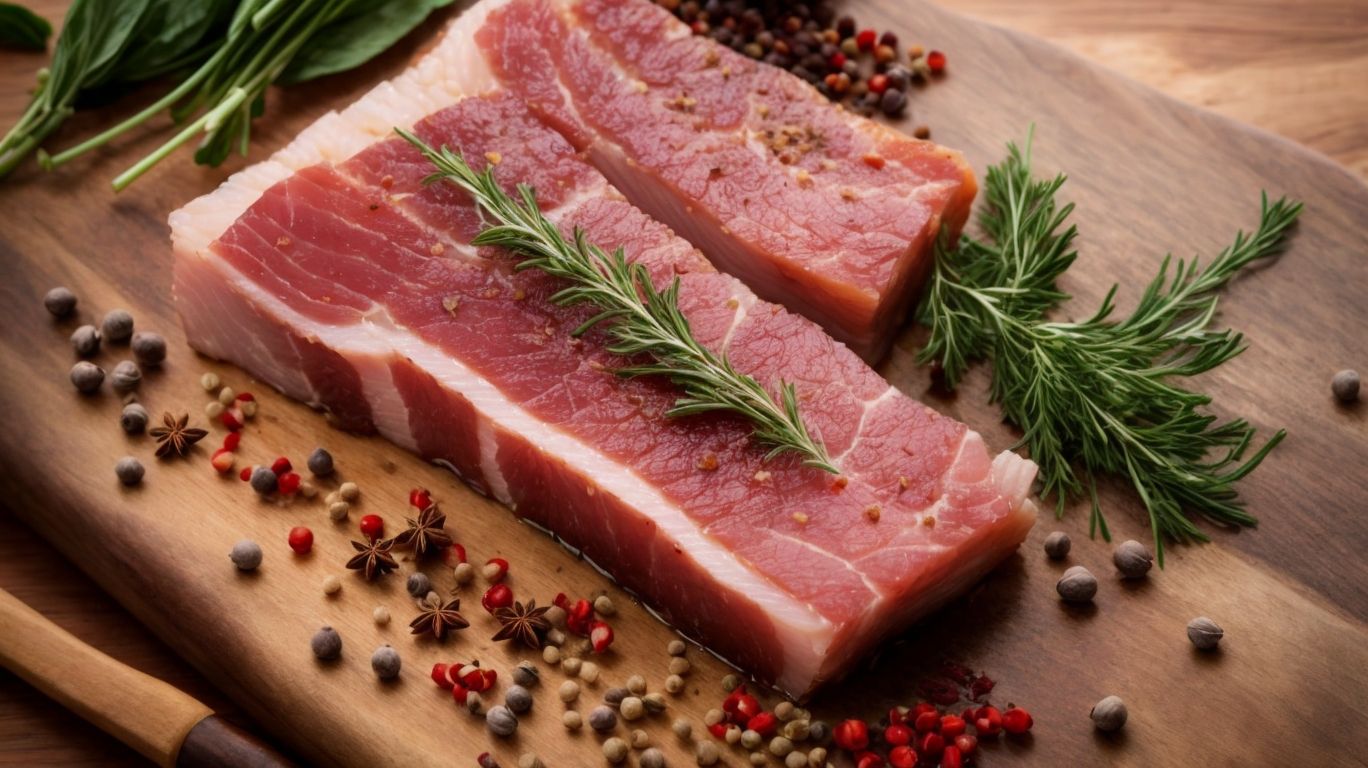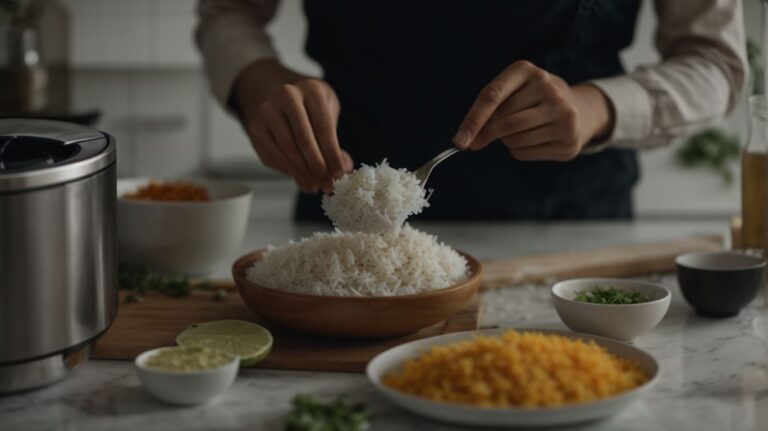How to Cook Pork Belly?
Are you a fan of succulent and flavorful pork belly but not sure how to cook it to perfection? Look no further!
In this comprehensive guide, we will explore everything you need to know about pork belly – from the difference between pork belly and bacon to how to choose the right cut, preparation tips, the best marinades and seasonings, various cooking methods, and even tips for serving and storing leftover pork belly.
Get ready to elevate your pork belly game with expert insights from a seasoned culinary blogger!
Key Takeaways:
What is Pork Belly?
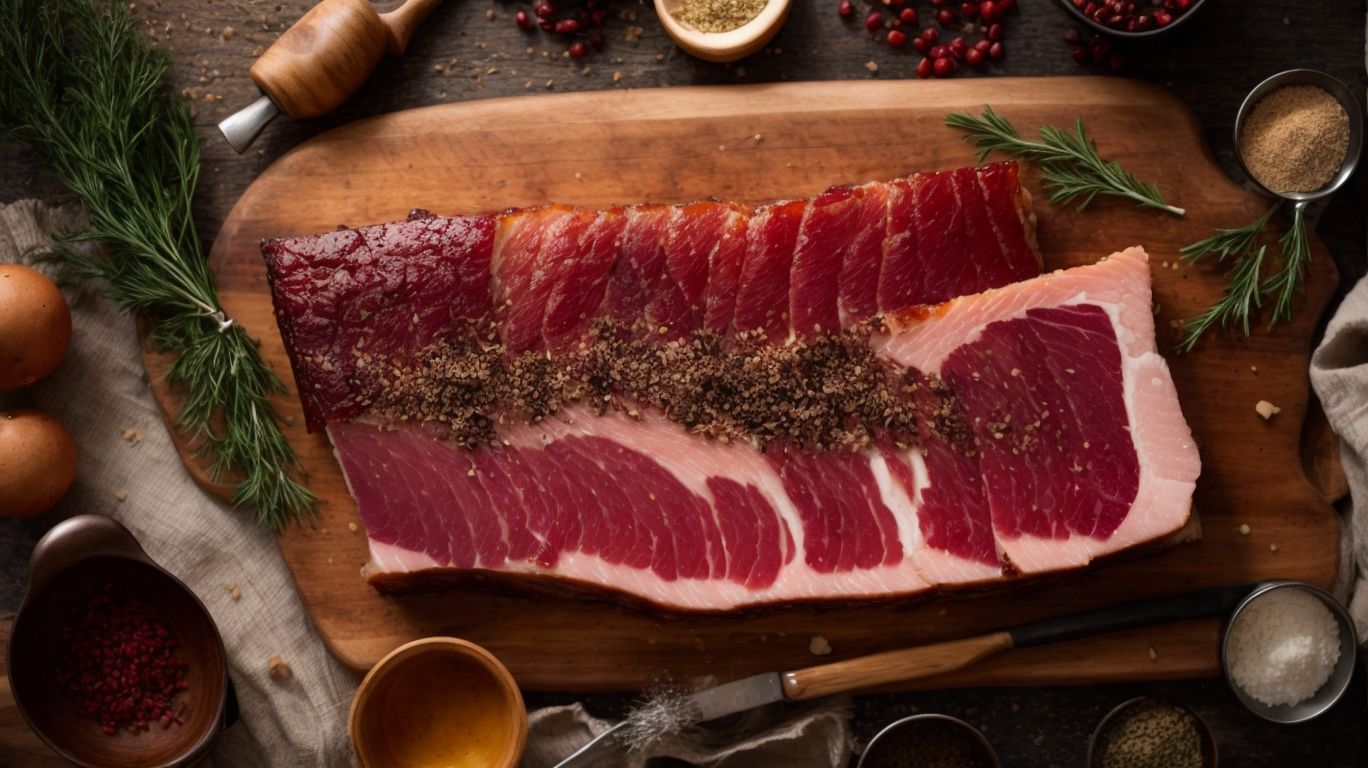
Credits: Poormet.Com – Dylan Jones
Pork Belly is a flavorful cut of meat that comes from the underside of a pig, known for its rich taste and versatility in various dishes.
When visiting a butcher, you may come across the term ‘pork belly,’ also sometimes referred to as ‘side pork.’
It is distinguishable from bacon due to its higher fat content and thicker layers of meat. This fatty content, however, is the key to its succulent flavor and tenderness when cooked properly.
Pork belly is celebrated in cuisines worldwide for its ability to be prepared in a myriad of ways, from crispy and caramelized to braised and melt-in-your-mouth tender.
What is the Difference Between Pork Belly and Bacon?
The primary difference between Pork Belly and Bacon lies in their preparation and curing processes, with pork belly being the uncured, unsmoked version of bacon.
In terms of culinary uses, pork belly is versatile and commonly used in various Asian cuisines for dishes like braised pork belly, pork belly bao buns, or crispy pork belly. On the other hand, bacon is traditionally enjoyed as a breakfast food, added to sandwiches, salads, and even used to infuse flavor into soups and stews.
In terms of flavor profiles, pork belly tends to be richer and fattier due to its higher fat content, while bacon has a distinct smoky, salty flavor from the curing and smoking process.
In terms of preparation, pork belly is often roasted, braised, or grilled to render the fat and create a crispy skin, whereas bacon is typically pan-fried, baked, or grilled until crispy and caramelized.
How to Choose the Right Pork Belly?
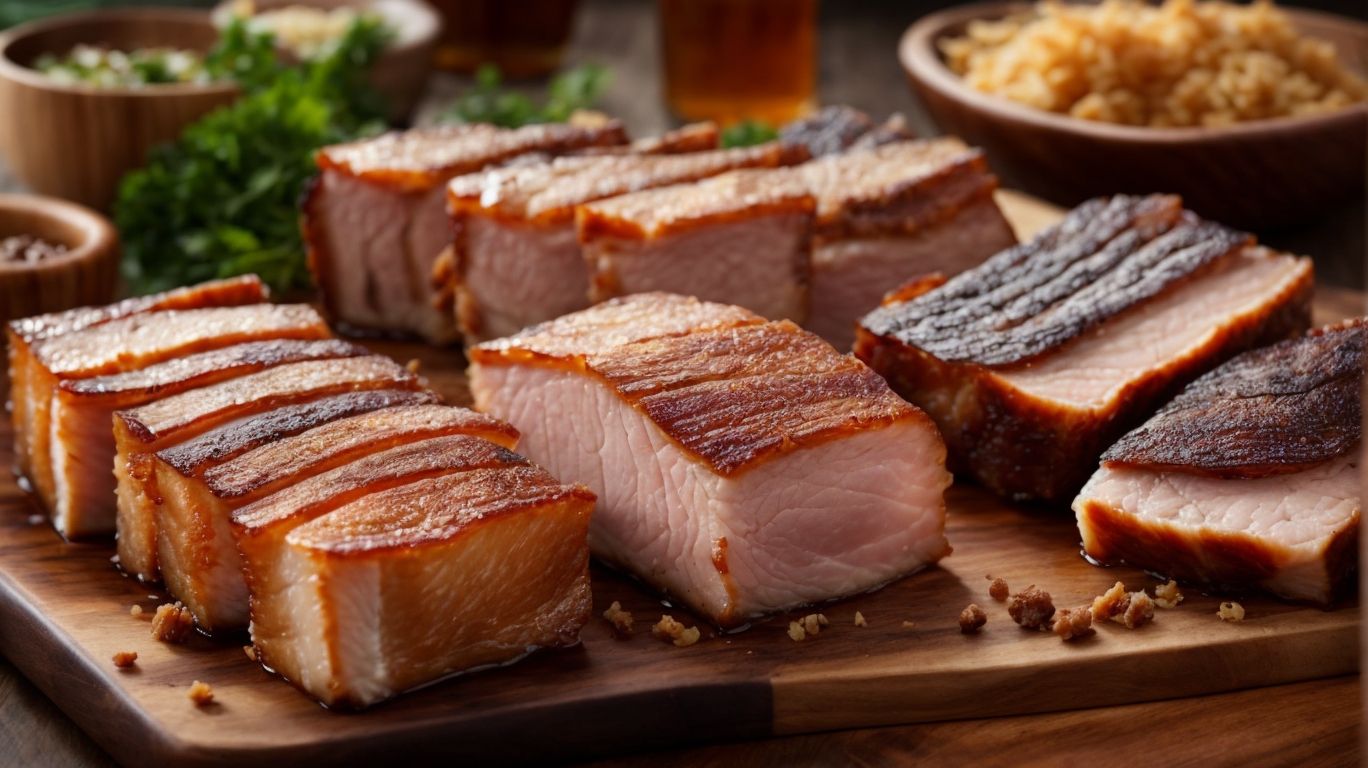
Credits: Poormet.Com – Aaron Brown
Selecting the perfect Pork Belly involves finding well-marbled cuts with a good balance of lean meat and fat, available at supermarkets and local butcher shops.
When looking for high-quality pork belly, pay close attention to the marbling, which refers to the streaks of fat running through the meat. Opt for cuts that have a nice distribution of fat, as this enhances the juiciness and flavor of the meat when cooked.
Consider the fat content – a good pork belly slice should have a decent amount of fat for succulence but not be overly fatty. This balance ensures a tender and flavorful end result.
While supermarkets often offer convenient choices, exploring local butcher shops can lead to discovering specialty pork belly cuts that are of superior quality. Butchers can provide valuable insights and recommendations on the best cuts for your cooking needs.
Preparation for Cooking Pork Belly
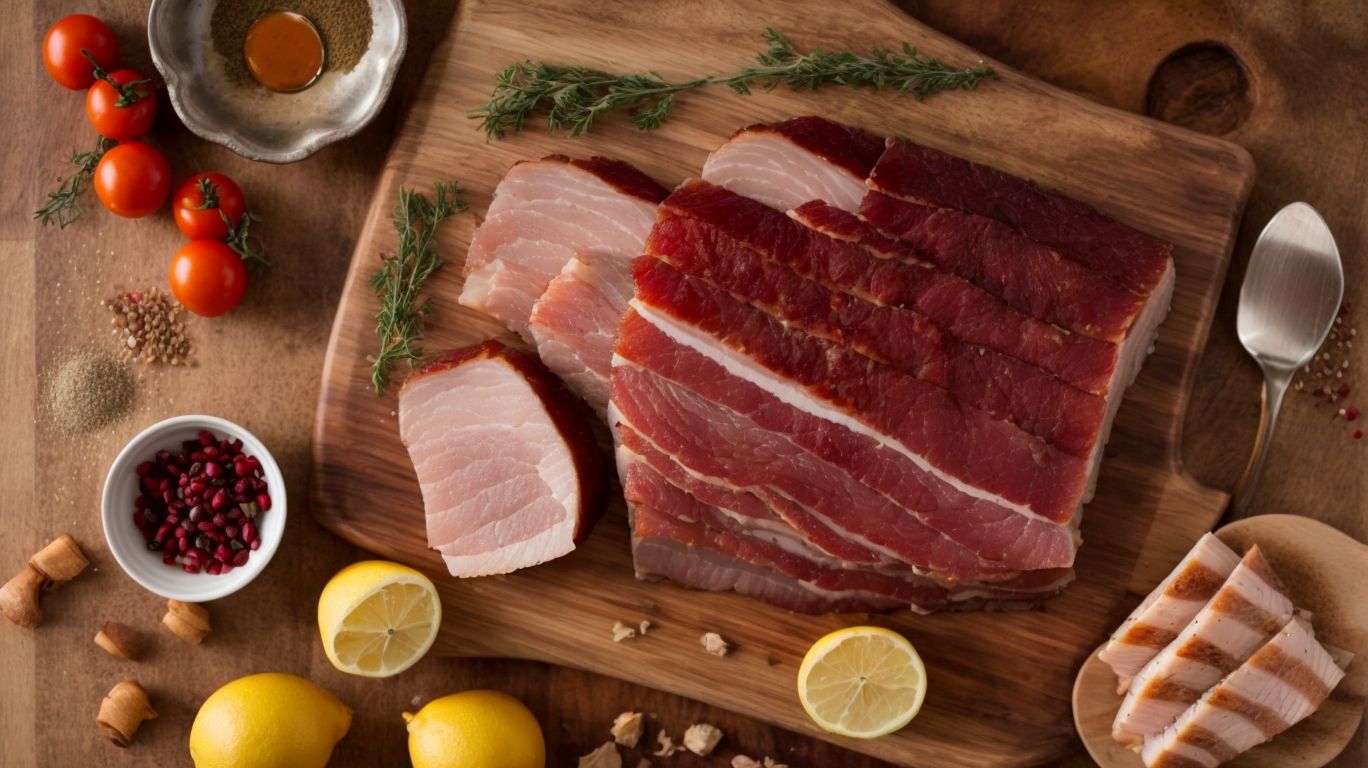
Credits: Poormet.Com – Aaron Wilson
Before cooking Pork Belly, it’s essential to prepare it by ensuring the skin is scored properly to allow for crispy crackling during the cooking process.
Start by patting the skin of the pork belly dry with a paper towel – moisture is the enemy of crispy crackling. Using a sharp knife, make parallel cuts across the skin, ensuring they are deep enough to penetrate the fat layer beneath but not all the way through to the meat.
For optimal results, space the cuts about 1 cm apart. This scoring technique not only helps render the fat and crisp up the skin but also allows flavors to penetrate the meat during cooking.
Should You Remove the Skin?
The decision to remove the skin from Pork Belly depends on personal preference and the desired outcome, as leaving it on can create crispy crackling while removing it results in a more tender meat texture.
When opting to keep the skin on Pork Belly, it serves as a protective layer during cooking, rendering the fat and allowing the crackling to develop with its characteristic crunch. The skin acts as a barrier, trapping moisture within the meat and contributing to the juiciness of the final dish.
How to Score the Skin?
Scoring the skin of Pork Belly involves making shallow cuts in a crosshatch pattern to help render the fat and achieve a crispy finish after cooking.
To score the skin of Pork Belly effectively, start by placing the belly skin-side up on a cutting board. Take a sharp knife and carefully make shallow cuts diagonally in one direction, ensuring not to pierce through the meat but only to score the fat layer. Then, rotate the belly 90 degrees and make similar cuts in the opposite direction, creating a diamond or square pattern. This scoring technique not only enhances the presentation of the dish but also allows the fat to render evenly during cooking, resulting in a delightfully crispy finish.
Marinade and Seasoning for Pork Belly
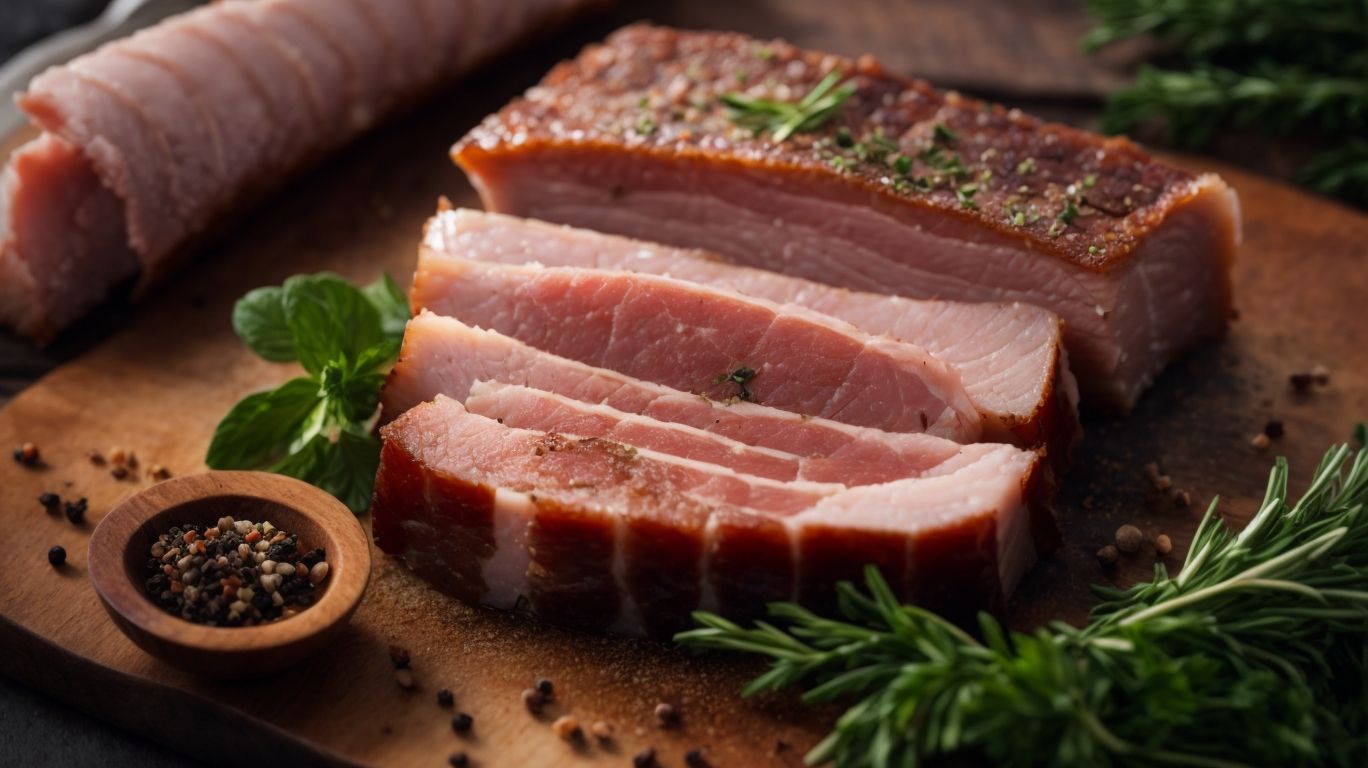
Credits: Poormet.Com – Ryan Scott
Enhancing the flavor of Pork Belly involves marinating it with a mix of seasonings like salt, white pepper, and five spice powder to create a delectable taste profile.
Marinades play a crucial role in tenderizing the meat and infusing it with layers of flavors, making every bite a delightful experience. When marinating pork belly, it’s essential to allow the flavors to penetrate deeply, typically for a minimum of 2-4 hours, or preferably overnight in the refrigerator to maximize the infusion. Popular seasoning choices also include garlic, soy sauce, honey, and herbs like thyme or rosemary, which add complexity to the overall taste.
To marinate effectively, ensure the pork belly is placed in a sealed container or a resealable bag with the marinade mixture, allowing it to coat evenly. For an extra kick of flavor, consider adding a splash of acidity like vinegar or citrus juice to balance the richness of the meat. Remember to massage the marinade into the meat thoroughly, ensuring all sides are well coated for uniform flavor distribution.
What are the Best Marinades for Pork Belly?
The best marinades for Pork Belly include combinations of vinegar, soy sauce, and aromatic spices that infuse rich flavors into the meat during the marinating process.
When marinating Pork Belly, it’s essential to consider the balance of flavors to enhance the succulence of the meat. For a tangy twist, try a marinade with apple cider vinegar, soy sauce, garlic, and a dash of honey for sweetness.
Alternatively, you can opt for a more aromatic profile by using a blend of balsamic vinegar, tamari sauce, ginger, and a pinch of five-spice powder. This combination will infuse the pork belly with a complex flavor profile that hits all the right notes.
What are the Recommended Seasonings for Pork Belly?
Recommended seasonings for Pork Belly consist of a blend of salt, sugar, and aromatic spices like five spice powder, creating a harmonious balance of flavors for the dish.
When preparing the seasoning mix for pork belly, you’ll want to ensure the salt and sugar are evenly distributed, enhancing the meat’s natural flavors. Incorporating spices such as paprika and garlic powder can add depth and richness to the dish, complementing the sweetness of the sugar and the savory notes of the salt. Sugar plays a crucial role in caramelizing the pork belly and creating a delightful glaze, while the spices bring a burst of aromatic complexity to every bite.
Cooking Methods for Pork Belly
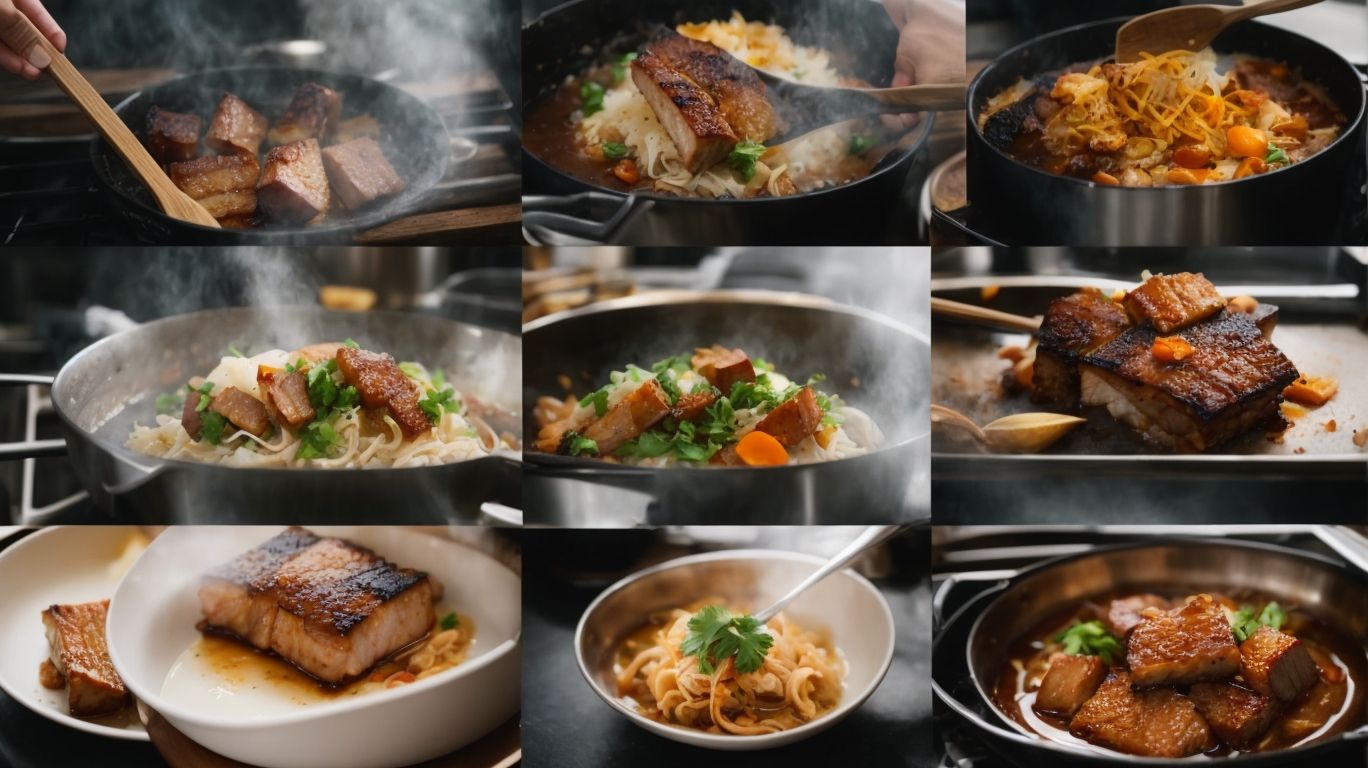
Credits: Poormet.Com – Logan Lewis
Pork Belly can be cooked using various methods such as oven roasting, slow-cooking, grilling, and pan-frying, each offering unique textures and flavors to the dish.
In terms of slow-cooking, the pork belly is typically cooked at low temperatures for an extended period, allowing the fat to render slowly, resulting in incredibly tender and moist meat. This method is ideal for those looking for a melt-in-your-mouth texture.
Additionally, braising involves searing the pork belly first, then simmering it in a flavorful liquid, such as broth or wine, in a covered pot. The slow, gentle cooking process of braising ensures that the meat becomes fork-tender and infused with all the rich flavors of the cooking liquid. Each method accentuates different aspects of the pork belly, offering a range of culinary experiences to explore.
Oven Roasting
Oven roasting Pork Belly is a popular method for achieving crispy crackling, where the meat is seasoned and cooked at a high temperature to create a flavorful and tender dish.
To begin the process, ensure that the skin of the pork belly is dried thoroughly to encourage the crackling formation. Score the skin with a sharp knife, making shallow cuts to help the fat render effectively. Next, generously rub the seasoning mixture, typically a blend of salt, pepper, and herbs, into the skin and meat, allowing it to infuse with flavors overnight in the refrigerator.
Grilling
Grilling Pork Belly imparts a smoky flavor and caramelized edges, especially when marinated with a flavorful spice paste that enhances the taste profile of the meat.
When grilling pork belly, it’s essential to focus on achieving that perfect balance between tenderness and crispy texture. The fat content in pork belly renders down during grilling, resulting in succulent, juicy meat with a delightful charred exterior. By using a well-balanced spice paste, you not only infuse the meat with layers of complex flavors but also help in creating a beautiful crust that locks in the juices. This cooking method brings out the natural sweetness of the pork while adding a depth of savory notes from the grill, making each bite a tantalizing experience.
Pan-frying
Pan-frying Pork Belly results in a crispy skin and juicy meat, requiring proper seasoning and a hot pan to achieve the desired texture and flavor profile.
To begin, ensure that the seasoning is generously applied to all sides of the pork belly. This step not only enhances the taste but also aids in developing a flavorful crust.
Next, heat your pan over medium-high heat until it is hot but not smoking. Placing the pork belly skin-side down, you’ll hear a satisfying sizzle as it makes contact with the hot surface. Resist the urge to move it around – let it sear for a few minutes until a golden brown crispy skin forms.
Slow Cooking
Slow cooking Pork Belly through braising methods with ingredients like apple slices and hard apple cider results in a tender and flavorful dish with a succulent texture.
When braising pork belly with apple slices and apple cider, the sweetness and acidity of the apple infuse into the meat, creating a harmonious blend of flavors. The slow cooking process allows the fat in the pork belly to render slowly, resulting in a melt-in-your-mouth texture that is unmatched. By incorporating apple slices, you not only enhance the taste but also add a delightful freshness to the dish.
Tips for Perfectly Cooked Pork Belly
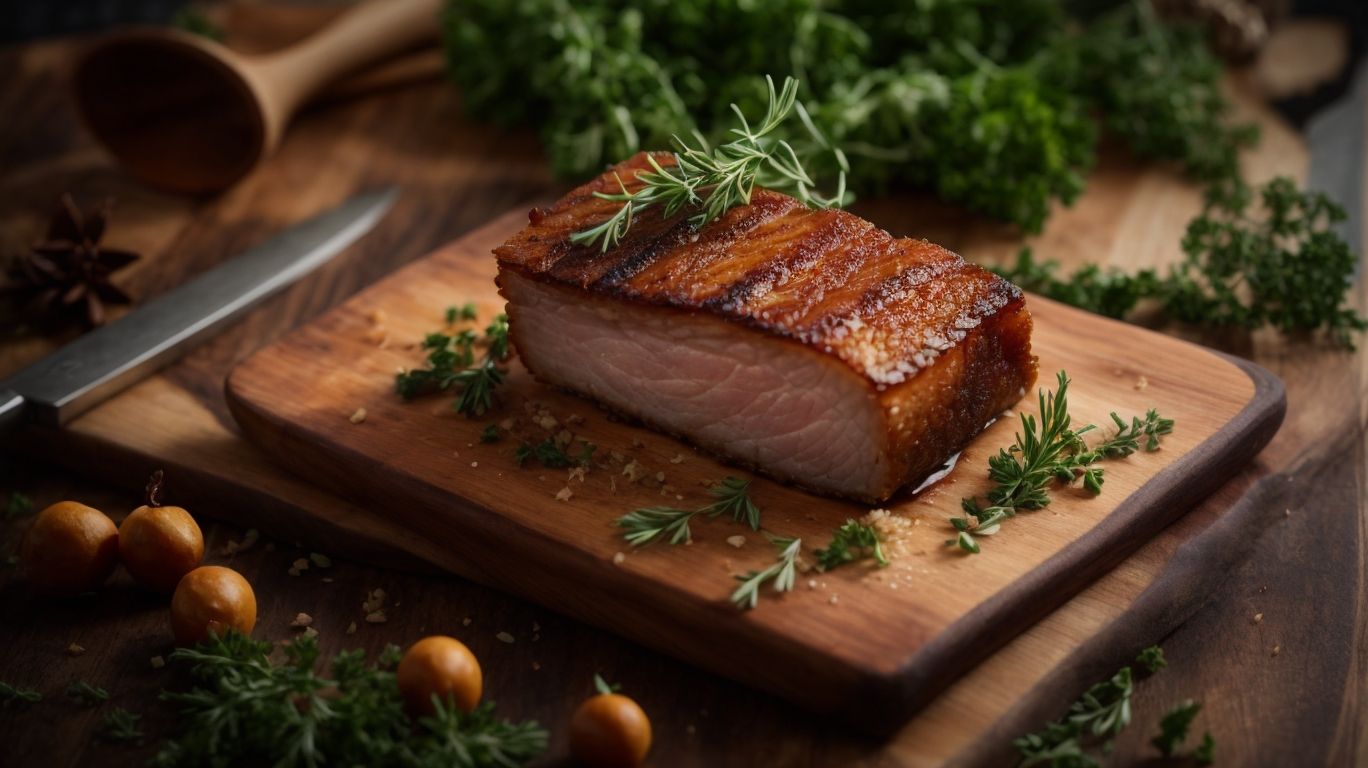
Credits: Poormet.Com – Jesse Taylor
To achieve perfectly cooked Pork Belly, ensure proper seasoning, flavor infusion techniques, and attentive braising methods to retain moisture and enhance taste.
In terms of seasoning, a good tip is to generously rub a mixture of salt, pepper, and your choice of herbs or spices onto the pork belly, allowing it to marinate for at least a few hours or overnight for maximum flavor absorption.
For flavor enhancement, consider adding ingredients like soy sauce, honey, garlic, ginger, star anise, or brown sugar to the braising liquid to create a rich and savory profile that will complement the natural richness of the pork belly.
When braising, make sure to use a heavy-bottomed pan or Dutch oven to ensure even heat distribution and prevent burning. Keep the braising liquid at a gentle simmer, covering the pan with a tight-fitting lid to trap the moisture and flavors within, resulting in a tender and succulent pork belly that melts in your mouth.
How to Serve and Enjoy Pork Belly?
Serving and enjoying Pork Belly can be elevated by pairing it with complementary side dishes and learning the best practices for storing any leftover portions for future consumption.
Serving Suggestions: When serving pork belly, consider pairing it with sides that complement its rich flavors. Some popular options include creamy mashed potatoes, tangy coleslaw, roasted vegetables, or a crisp green salad. These side dishes not only add variety to the meal but also help balance out the richness of the pork belly.
Storage Tips: To store leftover pork belly properly, wrap it tightly in aluminum foil or place it in an airtight container before refrigerating. This helps maintain its freshness and prevents it from drying out. Leftover pork belly can be reheated in the oven or on a stovetop for a quick and delicious meal the next day.
What are the Best Side Dishes for Pork Belly?
The best side dishes to pair with Pork Belly include options like stir-fried vegetables, rice, or bao buns with hoisin sauce and green onions to complement the rich flavors of the dish.
When serving Pork Belly, the versatility of stir-fried vegetables adds a delightful crunch and freshness to each bite. Accompanying the succulent meat with fluffy rice creates a satisfying contrast in textures, while the soft and fluffy bao buns offer a perfect vessel for creating flavorful sandwiches. The umami-rich hoisin sauce, combined with the sharpness of green onions, enhances the overall taste profile of the dish, elevating it to a whole new level of culinary experience.
How to Store Leftover Pork Belly?
Storing leftover Pork Belly involves refrigerating it in an airtight container to maintain freshness and flavor, ensuring it is consumed within a few days for the best dining experience.
When placing the leftover pork belly in the refrigerator, it is vital to opt for an airtight container to prevent any outside odors or moisture from affecting its taste. A tight seal ensures that the delicious flavors are locked in, keeping the meat tender and juicy. Remember, freshness is key when it comes to enjoying your leftover pork belly, as it can spoil if stored improperly. By following these simple steps, you can savor every bite of this delectable dish until the last piece.
Frequently Asked Questions
How to Cook Pork Belly?
Question: What is the best way to cook pork belly?
The best way to cook pork belly is to slow roast it in the oven at a low temperature for several hours. This will result in a tender and juicy pork belly with crispy skin.
How to Cook Pork Belly?
Question: Can you share a simple recipe for cooking pork belly?
Sure! One simple way to cook pork belly is to marinate it in a mixture of soy sauce, sugar, and spices, then grill it until crispy on the outside and tender on the inside.
How to Cook Pork Belly?
Question: How long does it take to cook pork belly?
Cooking time for pork belly will vary depending on the cooking method and size of the cut. On average, it can take anywhere from 2-4 hours to cook pork belly.
How to Cook Pork Belly?
Question: Is it necessary to remove the skin from pork belly before cooking?
It is not necessary to remove the skin from pork belly before cooking, but it is a matter of personal preference. Leaving the skin on will result in crispy and flavorful crackling.
How to Cook Pork Belly?
Question: Can pork belly be cooked in a slow cooker?
Yes, pork belly can be cooked in a slow cooker. Simply place the pork belly in the slow cooker with your desired seasonings and cook on low for 6-8 hours.
How to Cook Pork Belly?
Question: Are there any health benefits to cooking pork belly?
Pork belly is a good source of protein and contains essential vitamins and minerals, including iron, zinc, and B vitamins. However, it is high in fat and should be consumed in moderation as part of a balanced diet.

